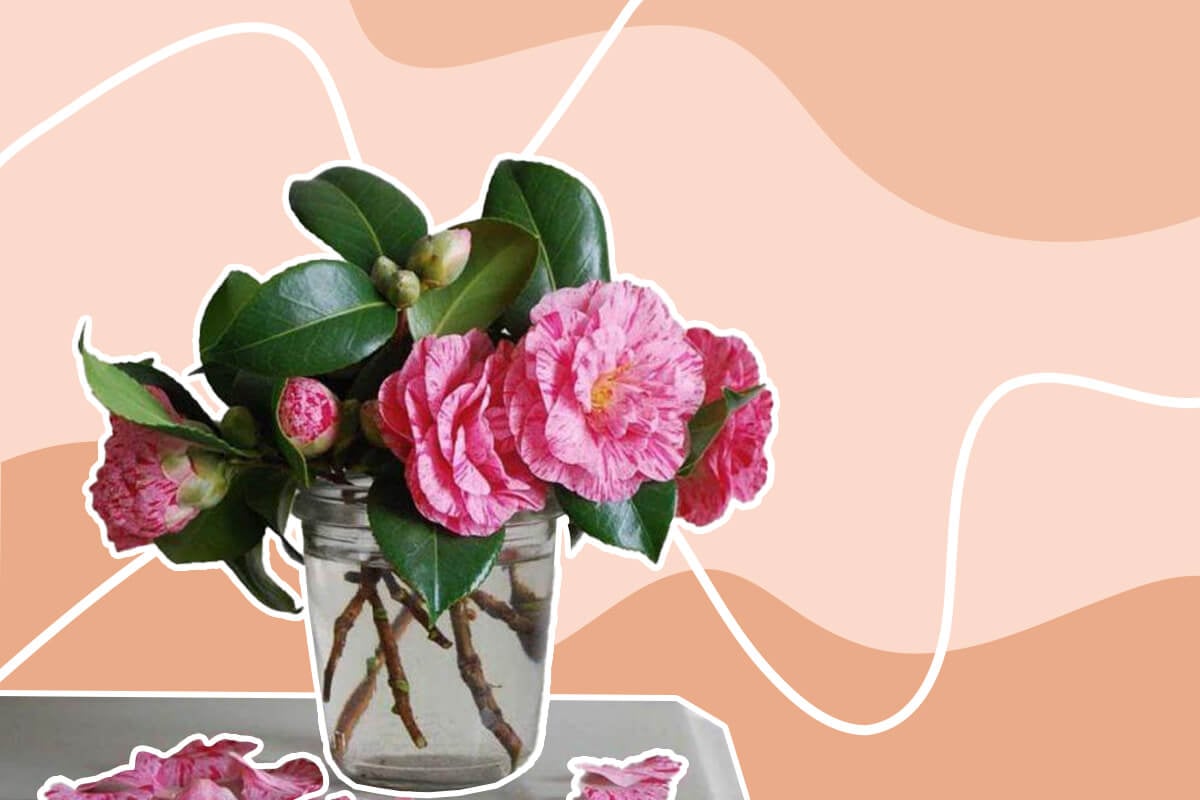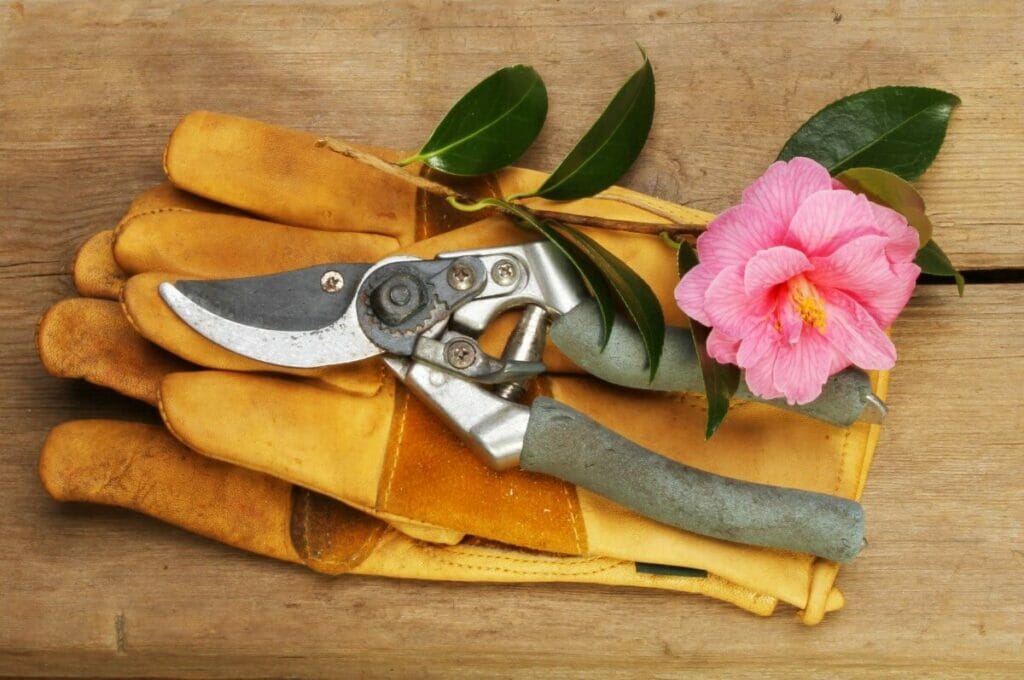How to Cut Camellia Flowers for Beautiful Floral Arrangements
Camellia flowers are a beautiful way of adding color to your garden, even in winter. However, you can also enjoy camellia flowers indoors in a variety of beautiful floral designs. This article will show you how to cut camellas for a vase or bouquet arrangement.

When Are Camellias in Season?

Depending on the species and cultivar, there are three flowering seasons for camellias. Early-season camellias, such as Camellia sasanqua, flower in the fall. Mid-season camellias like Camellia japonica bloom during the winter. Late-season camellias, including many hybrid varieties, flower during the spring.
When is the Best Time to Cut Camellia Flowers
Cut camellia flowers early in the morning or late in the evening. Avoid cutting camellia flowers during the afternoon, especially in warm temperatures. Cutting flowers in the morning helps them last longer because they haven’t lost too much water.
Best Tools for Cutting Camellia Flowers
Always use clean, sharp tools to cut camellia flowers for vases or bouquets. Sterilizing your tools with a 5% bleach solution helps limit the spread of diseases and pests between plants. Sharp tools make clean cuts, giving diseases fewer openings to infect your camellia shrub.
How to Cut Camellias for a Vase or Bouquet Arrangements

Here’s a step-by-step guide detailing how to cut camellia flowers for a vase or bouquet:
- Choose a vase or pot for your camellias and wash it thoroughly with warm soapy water. Then let it dry.
- Fill a third of the vessel with clean water. You can also add floral preservatives to help your flowers last longer.
- Cut your camellia flowers early in the morning or late in the evening. Choose flowers that aren’t yet fully open.
- Using clean, sharp tools, cut your chosen stem at a 45-degree angle. Cut just above a part of the stem where another bud is growing.
- Remove the lower leaves, especially ones that would be submerged in the vase.
- To help your cut camellia flowers last longer, cut a vertical slit about 2 inches long in the bottom of the stem. This helps the flower stem absorb more water while in the vase.
- Add your camellia flowers to the vase and place them in a cool location indoors.
- Replenish the water every other day. During each water change, cut a small section off the base of the stem at a 45-degree angle.
How Long Will Cut Camellia Flowers Last?
Cut camellia flowers usually last for three or four days without any floral preservatives. If you use floral preservatives, cut camellia flowers should last for about a week.
Tips for Extending the Life of Cut Camellia Flowers

Change the Water Regularly
Change the water in the vase every other day to help your camellia flowers last longer. Whenever you change the water, trim off a sliver of the base of the flower. Always cut at a 45-degree angle to help the flower absorb more water. Add more floral preservatives with every water change.
For more advice on how to maximize the vase life of your camellia cut flowers, check out our fresh cut flower care guide.
Keep the Vase Somewhere Cool and Shady
Position your camellia vase in a cool location out of direct sunlight. If the cut flowers are exposed to direct sunlight, they’ll end up using more water. This makes the flower wilt more quickly, ruining your display. Keep temperatures stable wherever possible and keep the vase away from cold or dry drafts from air vents or heaters.
Use Floral Preservatives
Floral preservatives can improve vase life for cut camellia flowers. These preservatives should be mixed into the water during each water change. Floral preservatives provide extra nutrients to help sustain your camellia flowers.
Wrapping Up
Camellia flowers are an attractive option for vases and bouquets, especially during the winter months. Always use clean, sharp tools to reduce the spread of disease. Cut camellia flowers should last for approximately a week in a vase if you use floral preservatives.
Edd is a budding content writer and gardener living in the United Kingdom. He has a bachelor's degree in Creative and Professional Writing and has written for several gardening publications online. He is passionate about nature and sustainability with a focus on gardening and wildlife.

